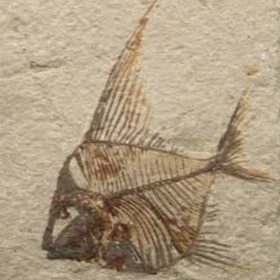Another possible solution for disharmonious associations in Ice Age deposits
By Carla Estell 2021
There are fossil beds that contain mainly dinosaur bones such as Dinosaur National Monument in Colorado, others that contain mainly fish like Fossil Butte in Wyoming. But, then there are the puzzles of paleontology – those beds which are filled with animals and plants that don’t belong together. These are referred to as disharmonious associations. The fossils which are in the same bone bed (fossils are associated) but the living organisms are not found together (since they don’t belong together they are called disharmonious). In other words, their bones are found together but they do not typically live together. These beds are not as rare as you may think. For example:
- Reindeer, oxen, wooly mammoths, and hippopotamus are found together in England and France
- Camels, horses and mammoths are found in Alaska
- rodents, rhinos, cats, hippos, birds even a parrot was found together in Siberia
Scientists are scrambling to explain how hippos could have survived in the cold European environment alongside reindeer and woolly mammoths. Climate change offers the best explanation. But regardless of how much it is touted as fact, is it really feasible that earth’s climate could have been so radically different in the past?
Although there are many factors that work together in determining an area’s climate, the main factor is the heat, or lack thereof, coming from the sun. Due to the tilt of earth’s axis, the amount of sunlight and its intensity follows a defined cycle throughout the year. Even with warm ocean water and currents bringing heat to northern Europe, there is still the problem of the lack of sunlight for plant growth. What was the food source for all these animals during the winter months?
In an earlier article, Do Arctic Fossil Forests Prove Trees Grew near the South Pole?, the fossilized trees found in Antarctica were shown to be in burial position, but not necessarily growth position. This idea can be taken a step further in the discussion of disharmonious associations.
When looking at earth’s geology in terms of the Flood and considering the fact that every land-living, air-breathing animal, bird, and man died, except for those on the ark; the question must be asked, ”What happened to the remains of those animals that died during the Flood?” Considering the fact that most animals can swim and dead animals float, it is logical to assume there would have been huge islands of floating carcasses along with trees during the Flood. Wind and ocean currents could have transported these carcasses thousands of miles from where they had lived.
The amazing journey of the 28,000 rubber ducks that were washed into the Pacific Ocean during a storm in 1992, illustrated how quickly currents will carry floating debris around the world. Within 15 years they had washed up on every continental shore.
Although over simplified, this explains the fossil order found in the geological column. While the carcasses were afloat, the lower strata which contain oceanic invertebrate fossils were being laid, fish were buried next, and the trees and mammals as they sank or were beached on the raising continents were buried last.
There is no need to explain how hippos could have lived in England, when the Flood explains how their bones became buried there. It also makes sense as to why today there are only hippos found in Africa, but their fossilized bones are found throughout the world. There could have been millions of hippos on the earth at the start of the Flood and their remains were buried wherever they sank but there were only two hippos on the ark and they headed to Africa after disembarking.
https://creation.com/disharmonious-associations ice age explanation from Christian perspective
https://www.scientificamerican.com/article/bison-vs-mammoths/ example of a secular explanation
https://www.thesun.co.uk/news/4963360/blue-planet-ii-28000-rubber-ducks-lost-sea-25-years-ago-still-washing-ashore/ floating ducks
https://www.bbc.com/news/science-environment-37764327 siberia fossils

Find out more …
- About The Estells
- Another possible solution for disharmonious associations in Ice Age deposits
- Articles
- Connecting the Dots
- Contact information
- Creation based VBS
- Creation Resources
- Crinoid Fossils: Evidence of Millions of Years or the Global Flood?
- Did Winter Cleanse the Flood Water of Excess Salt?
- Do Antarctic Fossil Forests Prove Trees Grew near the South Pole?
- Educational Resources
- Fish Fossil
- Fish Fossils
- Geodes: Crystals Hidden Within a Round Rock
- Geology Explained in Terms of Global Flood Recovery
- God’s Forgotten Promise
- Living Fossils
- Making logical sense of earth’s geological column.
- Mount Saint Helens
- Mount Saint Helens
- Petrified Wood
- Petrified Wood
- Post Flood Migration of Mammals
- Printed Letters to the Editor
- Resources
- Reverse Engineering the Grand Canyon
- Seeing God’s Ingenuity in Earth’s Design
- Seminar descriptions with Fliers and Bios
- Seminar Topics
- sliderImages
- Songs and Poems
- Tapirs, Endangered or Hardy Survivors?
- The Demise of the Mammoths
- The Flood
- The launching of our creation ministry
- The Overlooked Flood Stage
- The Rewriting of Paradise
- The Rocks Speak Out
- The Stones’ Story Retold
- The Stones’ True Story
- The Way of Salvation
- Videos
- Was there an Ice Age?
- Whale Falls: Present Key to the Abundance of Sea Invertebrate Fossils

